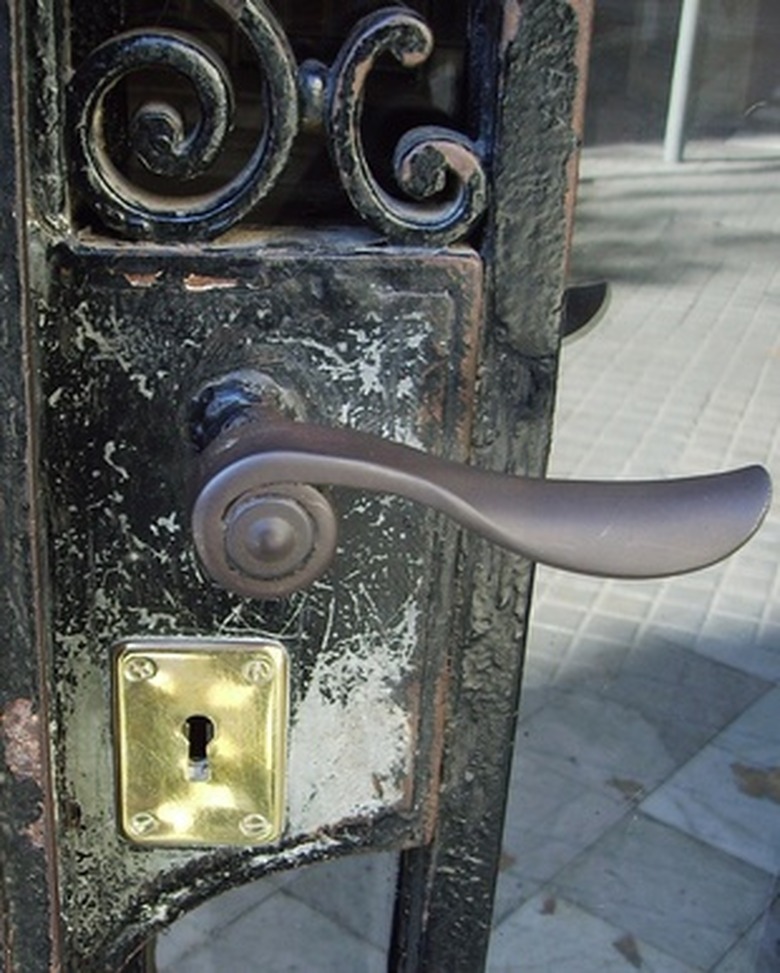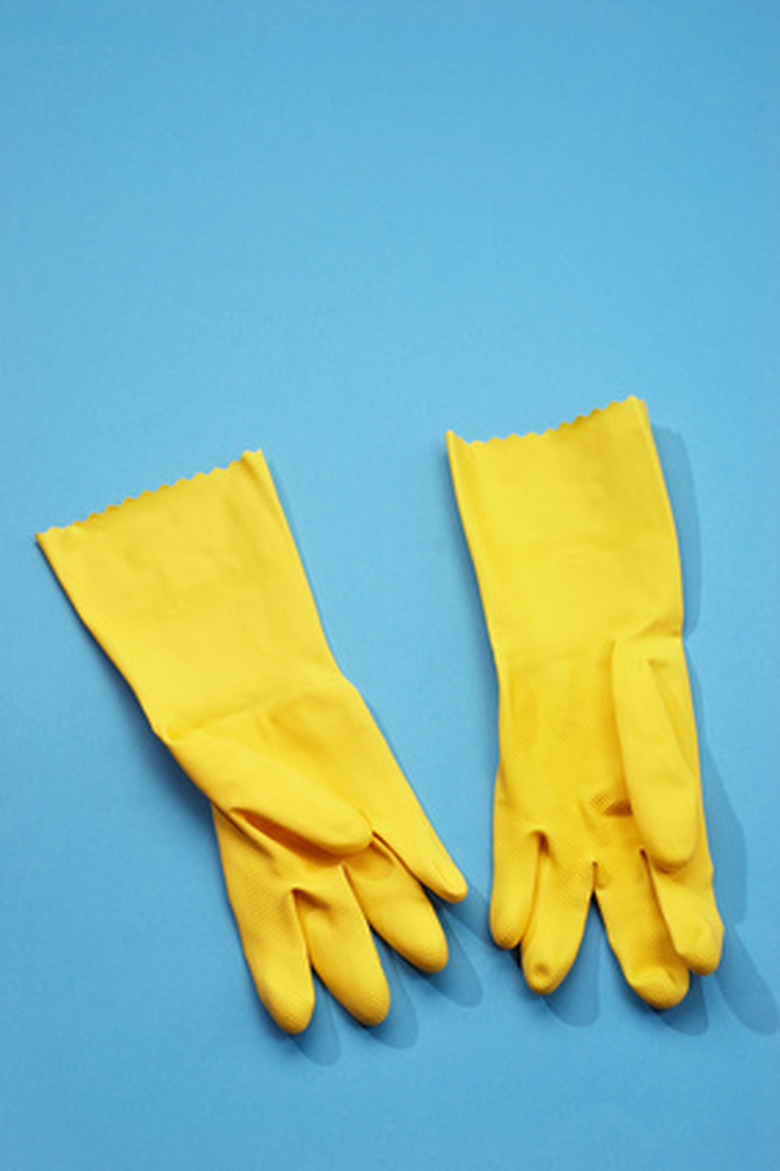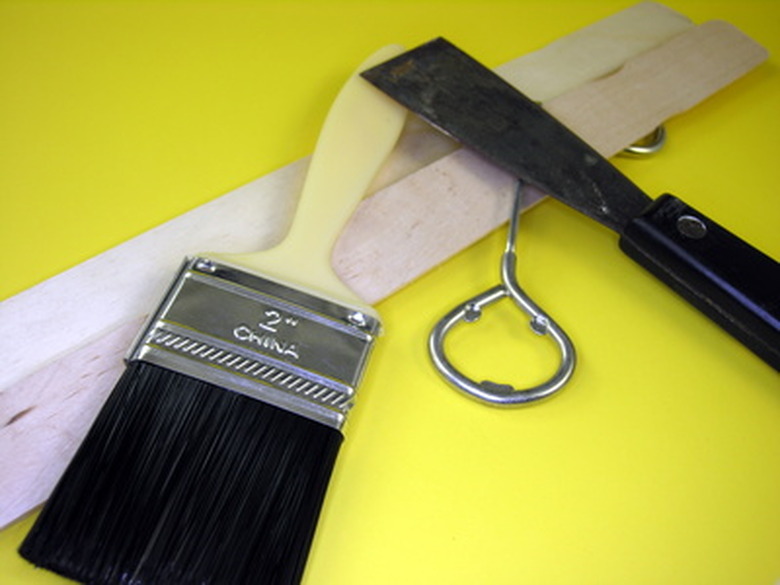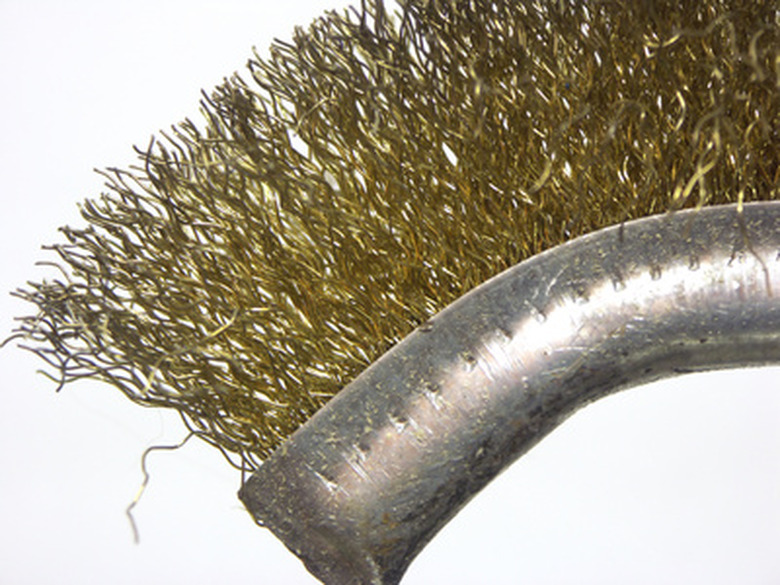How To Get Old Paint Off Of Wrought Iron
Things Needed
-
Rubber gloves
-
Chemical paint remover in gel form
-
Paint brushes, 2 inches wide
-
Plastic scraper
-
Bucket or hose
-
Old, clean rags
-
Wire brush
Wrought iron furniture or decor adds an elegant touch to any room. If you've acquired antique wrought iron furniture, and the shabby chic look isn't what you're after, you may have chipped or old paint to contend with. Removing paint from wrought iron is a tedious process but once done, your wrought iron furniture or decorative piece will be ready for display or for a fresh coat of paint. There are many methods by which you can remove paint from wrought iron. Many of these methods involve the use of high-pressure equipment such as sand blasters. Simpler methods exist and can help you achieve the same goals.
Step 1
Place rubber gloves on prior to beginning and keep them on as you use the paint remover. Chemical paint remover can burn the skin.
Step 2
Apply a thick coat of paint remover to the wrought iron using the paint brush. Paint remover in gel form is thicker and stays in place, rather than dripping off the surface it's applied to. Allow the paint remover gel to sit on the wrought iron according to the directions. After several minutes, you'll see the paint begin to bubble, which indicates its readiness to come off.
Step 3
Scrape the bubbled paint, gently, using the plastic paint scraper. Plastic is easier on the wrought iron as metal scrapers can cause permanent scratches.
Step 4
Rinse old paint away using a bucket of water or your hose. Dry the wrought iron with the old rags. If there's a lot of paint left or several coats were applied, you may need to repeat the procedure.
Step 5
Brush the wrought iron briskly with your wire brush. This will remove any last traces of paint, leaving your wrought iron ready to be used or painted with a fresh coat.
Tip
Rub petroleum jelly into your skin around the top edge of the gloves in case you get any paint remover on it. The petroleum jelly will form a protective layer on your skin.
Warning
It's best to do paint removal projects outdoors where there's fresh air that will help dissipate the chemical remover odor and fumes.



